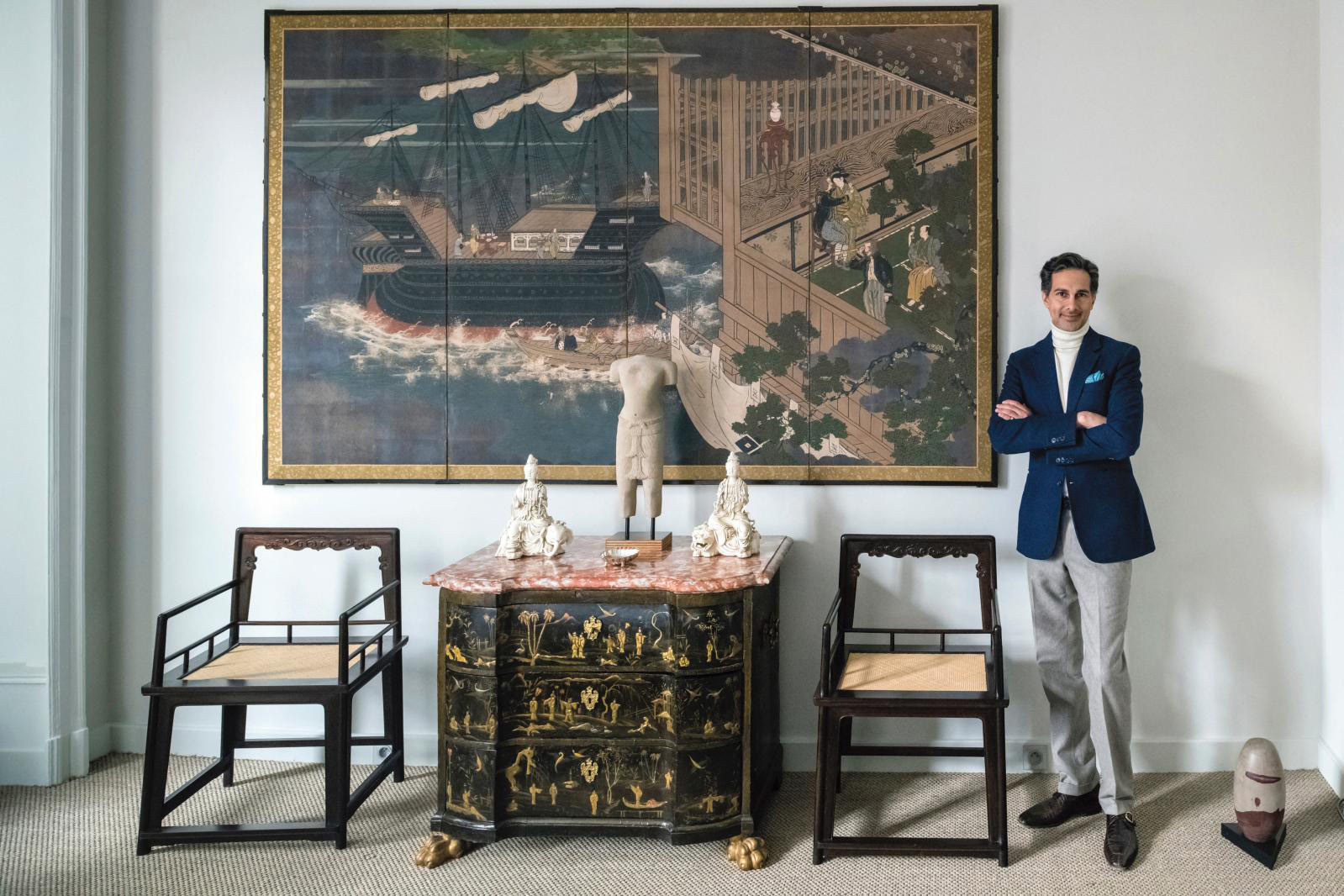by Annick Colonna-Césari
What kind of collector is Sheikh Hamad?
He is impassioned, interested in every culture and era, and highly appreciative of all forms of refinement. He discovered art when he was very young while traveling in Europe with his parents. At the age of 6, he visited the Louvre Museum for the first time with his mother, and after that, his taste developed in leaps and bounds. His first purchase, at 18, was a pair of silver coolers by the British silversmith Paul Storr (1770-1844). He now has 40 of them. Meanwhile, his interests obviously evolved. In the beginning, when he was influenced by his memories of palaces and castles, his main areas of interest were enamels, porcelain, silverware and furniture. Then he moved into the great civilizations in a universalist spirit, leaving the classical territories of Greece, Egypt and Rome to explore the treasures of Mesoamerica, Africa and Japan. His collection currently consists of between 5,000 and 6,000 pieces. Ranging from antiquity to the present day, it is remarkably eclectic, with works from the Renaissance, Indian jewelry, African sculptures and silverware from the Achaemenid period alike. Sheikh Hamad is particularly sensitive to superb craftsmanship and materials, and has a fondness for fine metals like silver and gold, precious stones and hardstones like agate, jasper and carnelian. In a word, this is really a very personal collection. Although he sometimes seeks advice from experts, his choices are dictated by no one. However, the spirit of his purchases has changed. They were initially intended to embellish his homes. But in the 2010s, he realized that they could interest the public as well, and his acquisitions, which had always been of high quality, became increasingly museum-worthy.
Click here to read more.
He is impassioned, interested in every culture and era, and highly appreciative of all forms of refinement. He discovered art when he was very young while traveling in Europe with his parents. At the age of 6, he visited the Louvre Museum for the first time with his mother, and after that, his taste developed in leaps and bounds. His first purchase, at 18, was a pair of silver coolers by the British silversmith Paul Storr (1770-1844). He now has 40 of them. Meanwhile, his interests obviously evolved. In the beginning, when he was influenced by his memories of palaces and castles, his main areas of interest were enamels, porcelain, silverware and furniture. Then he moved into the great civilizations in a universalist spirit, leaving the classical territories of Greece, Egypt and Rome to explore the treasures of Mesoamerica, Africa and Japan. His collection currently consists of between 5,000 and 6,000 pieces. Ranging from antiquity to the present day, it is remarkably eclectic, with works from the Renaissance, Indian jewelry, African sculptures and silverware from the Achaemenid period alike. Sheikh Hamad is particularly sensitive to superb craftsmanship and materials, and has a fondness for fine metals like silver and gold, precious stones and hardstones like agate, jasper and carnelian. In a word, this is really a very personal collection. Although he sometimes seeks advice from experts, his choices are dictated by no one. However, the spirit of his purchases has changed. They were initially intended to embellish his homes. But in the 2010s, he realized that they could interest the public as well, and his acquisitions, which had always been of high quality, became increasingly museum-worthy.
Click here to read more.





